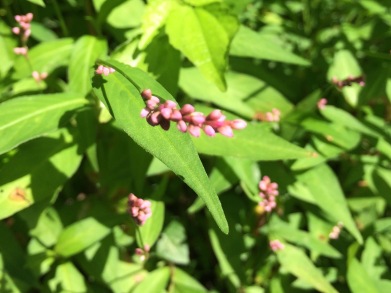June 24, 2015
Summer visitors to the park can still enjoy a few varieties of flowers, but they can be found only in sunlit areas. These spots are limited due to the tree leaves forming a canopy that blocks much of the sunlight, so you’ll have some hunting to do.
If you own a garden or any bit of landscaping, you may fear the sight of this one. To the rest of you, it’s a beautiful addition to Pennsylvania roadways. Historically, Crown Vetch was brought to North America as a solution to soil erosion. The plant spreads rather quickly in many types of soils, and its roots are strong and widespread. Most ecologists admit that Crown Vetch is invasive and in many cases wildly out of control. Let’s keep an eye on this one around the park.




- They can help create younger looking skin.
- The leaves of the plant can be brewed for a cup of tea.
- These berries can help with labor pains. Who knew?
Please be aware that other animals eat them. They’re “for the birds!”
 Please check back in early March for the 2016 Wildflower Walk schedule, or subscribe to this blog by clicking the “Follow” button. See you in the spring!
Please check back in early March for the 2016 Wildflower Walk schedule, or subscribe to this blog by clicking the “Follow” button. See you in the spring!

